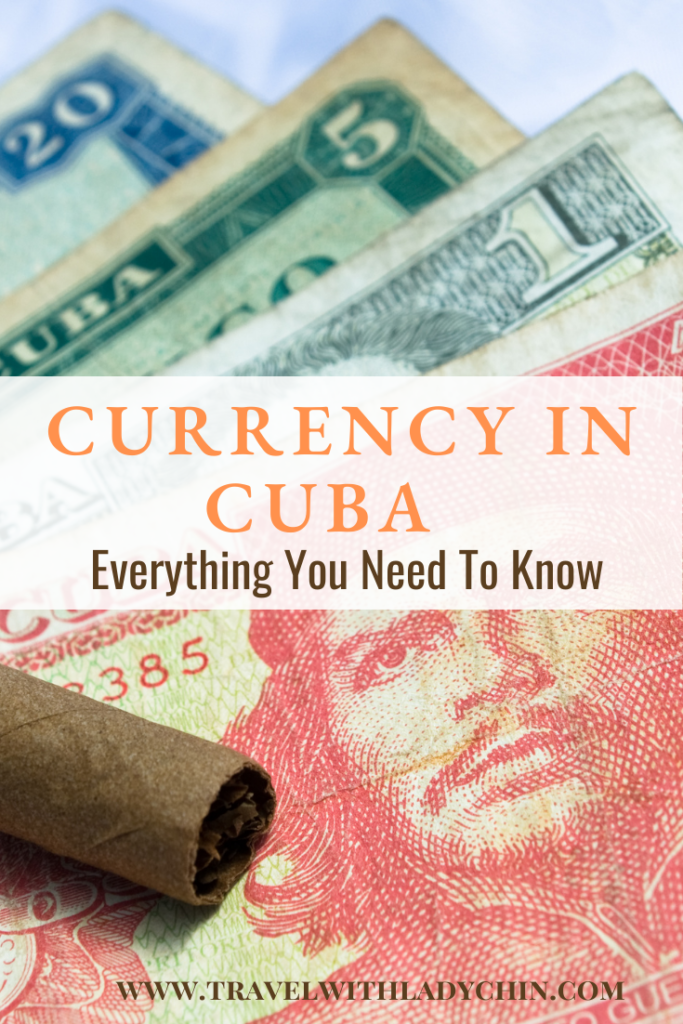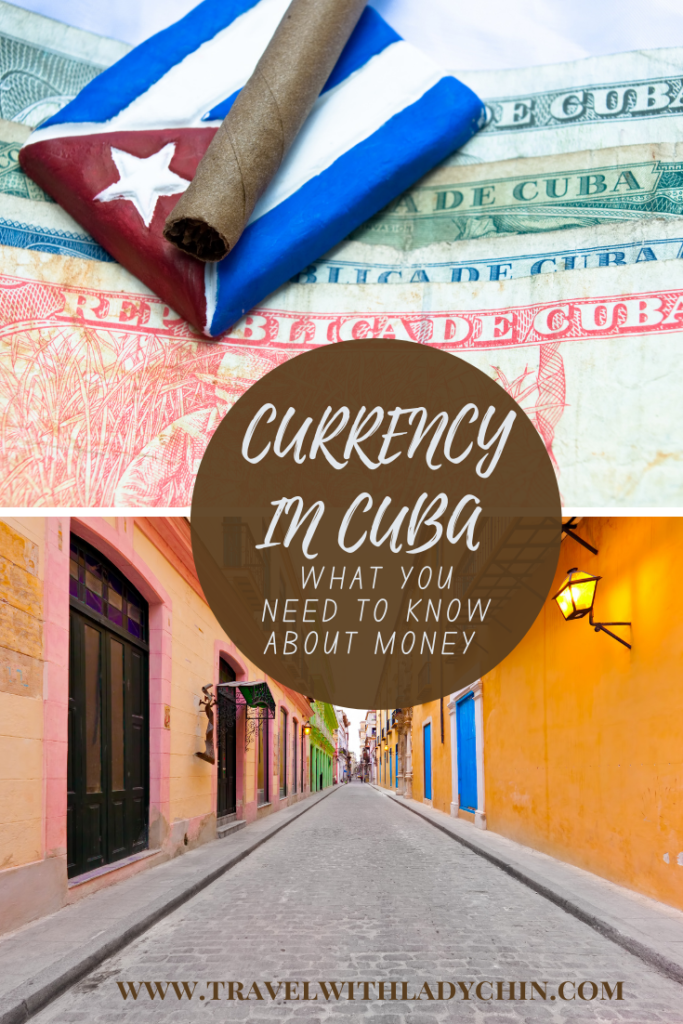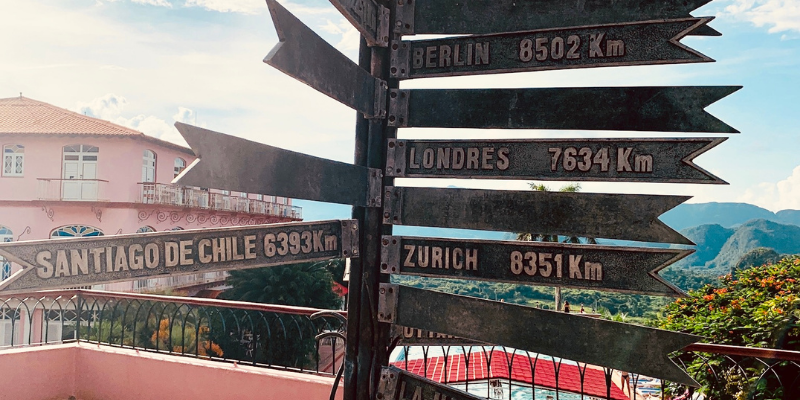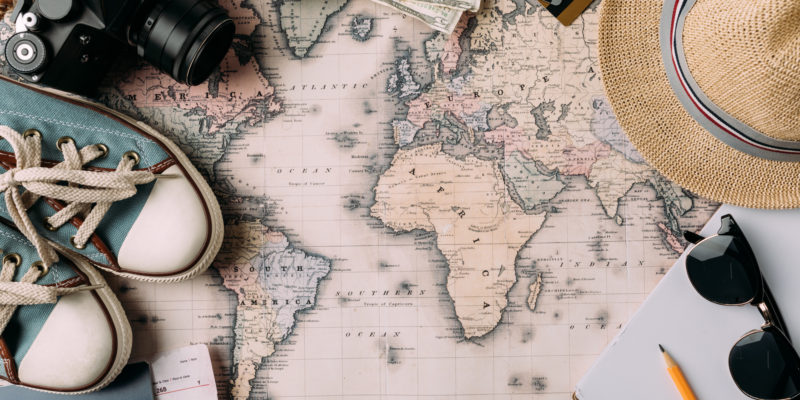Last Updated on September 20, 2023 by Lady Chin
Are you visiting Cuba for the first time and unsure how the currency works? Can you use your U.S. credit card or debit card? Are ATMs available in Cuba? Can you use U.S. dollars in Cuba? Did you hear there are two currencies?
Not to worry, I’ve got you covered. In this guide, I will break down everything U.S. visitors need to know about the currency in Cuba and save you from making frustrating mistakes.
Pin Me for Later!
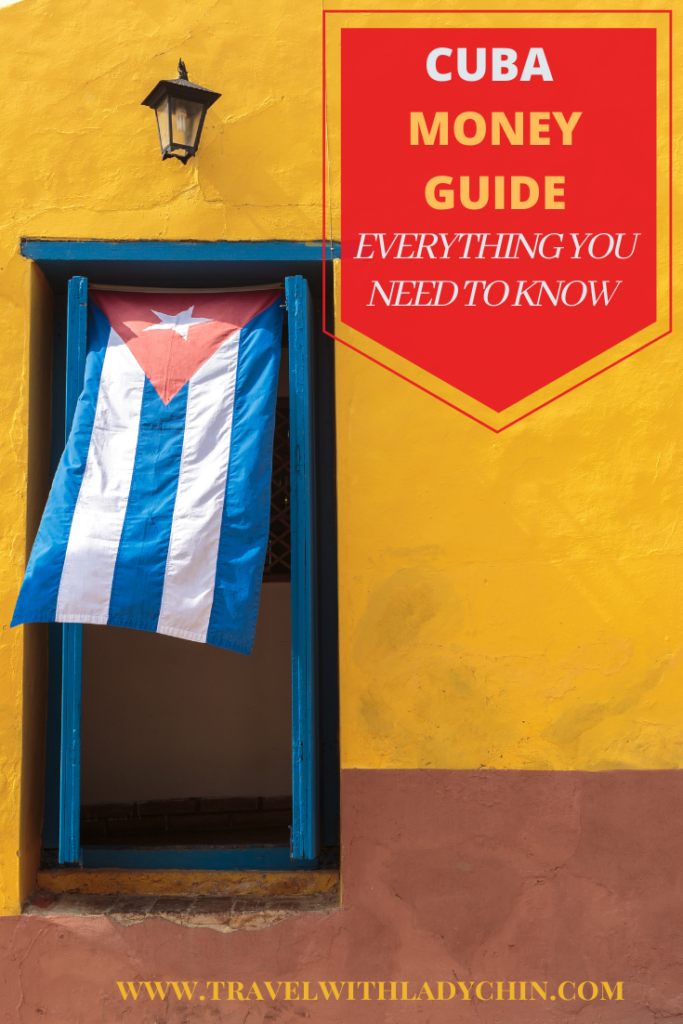
This is the second post in the Cuba series. Here’s the complete 10-part series:
Cuba Travel Series
Travel Guide: The Complete Travel Guide For First Time Visitors
Money Honey: Cuban Currency Guide: Everything You Need To Know
For The Culture: 36 Ways To Immerse Yourself in Afro-Cuban Culture
The Ultimate Cuba Bucket List: 101 Fun Things to Do in Cuba
Cuba Bucket List: Top 10 Epic Things To Do in Cuba
Packing Tips: The Complete Guide To Packing For Your Trip To Cuba
Inspiration: 30 Photos That Will Inspire You To Visit Cuba
Travel Tips: 10 Things You Should Know Before Visiting Cuba
Trinidad: How To Explore Trinidad in 3 Days
Viñales: How To Take the Perfect Day Trip From Havana To Viñales
What You Need To Know About The Money In Cuba
What is the official Cuban currency?
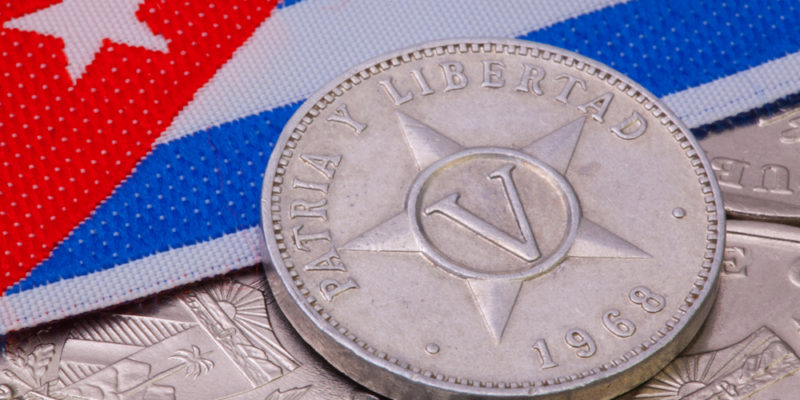
Until December 2020, Cuba had two currencies: the CUP (Cuban Peso) and CUC (Cuban Convertible Peso). CUP was reserved for Cuban residents, and tourists primarily used CUC.
That all changed in January 2021 when the CUC was discontinued, leaving just the CUP as the official Cuban currency.
For visitors, this means you must use CUP at all resorts, hotels, airports, restaurants, and tourist attractions.
I should also mention that having lower denomination bills comes in handy, especially when purchasing small expenses such as bus fares, taxis, and street food.
While CUC is no longer accepted in Cuba, you may see some CUC still circulating until mid-2021. Cuban residents have until July 2021 to exchange their remaining CUCs for CUPs.
The primary Cuban currency known as CUP (residents refer to it as “‘Moneda Nacional” or MN) is available in bills of 1, 3, 5, 10, 20, 50, 100, 200, 500, and 1000.
The current CUP exchange rate is 24 pesos for USD 1. However, be sure to check xe currency converter, as rates tend to fluctuate daily.
What is the difference between CUC and CUP?
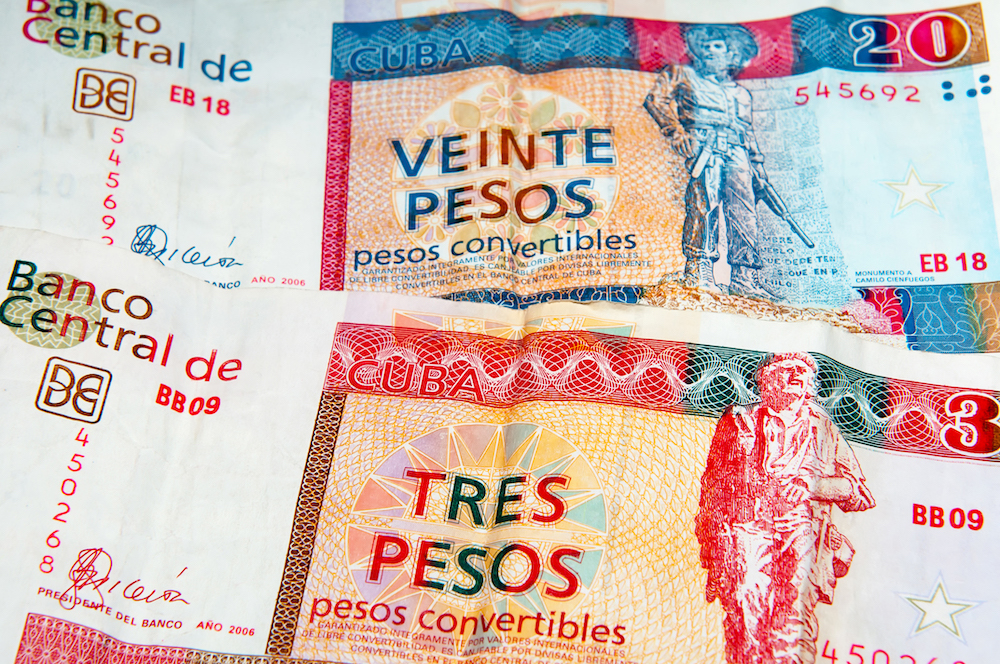
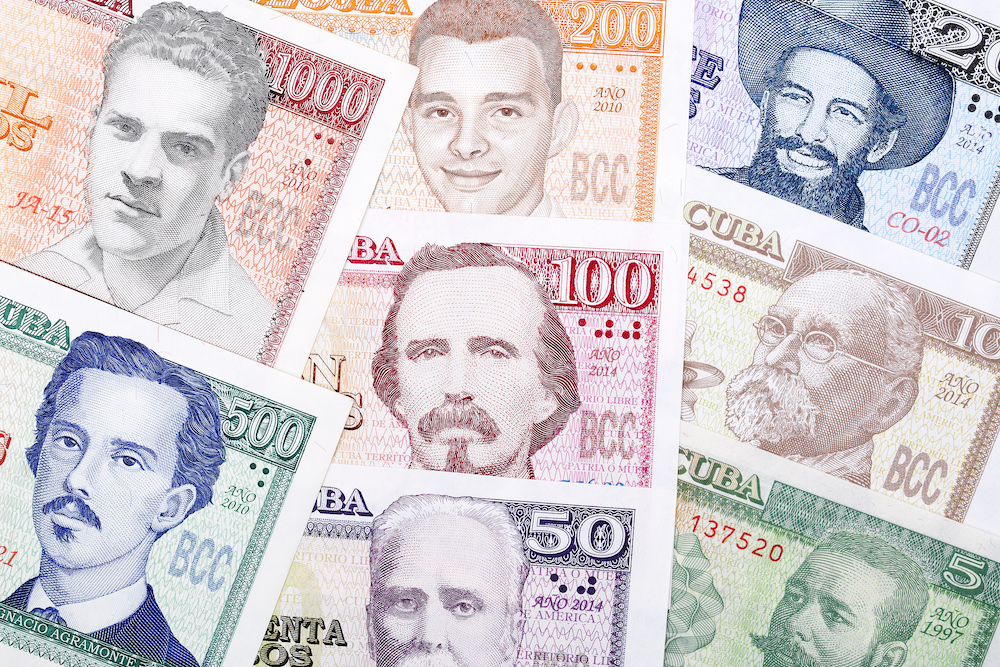
To avoid getting scammed, you need to know the difference between the two currencies. CUP bills have portraits of famous Cuban leaders such as; José Martí, Fidel Castro, Ernesto Guevara (“Che”), and Antonio Maceo, to name a few, on the front of the bills. CUC banknotes (no longer in circulation) have images of monuments or statues.
Also, CUC has the Cuban Convertible Peso smack dab in the middle of the bill. If you exchange money and don’t see the faces of famous Cuban leaders, then know the money you receive will not be accepted in Cuba.
What’s the best currency for visitors to bring to Cuba?
Figuring out the best currency to bring to Cuba has to be one of the questions I’ve been asked the most. The answer depends on where you are traveling from. In the past, I’ve brought Euros or British Pounds with me as they offer the best exchange rates at that time. Before December 2020, a 10% tax was imposed on exchanging USD, which is why I never brought American dollars. That said, your best bet is to exchange your U.S. dollars for Euros or British Pounds before arriving in Cuba.
Note: Cuban currency is not traded internationally and can not be bought ahead of time outside the country.
Can I use U.S. dollars in Cuba?
Let’s face it, cash is always king, especially when it comes to American dollars. However, you cannot use U.S. dollars in Cuba as a traveler. Only Cuban residents are allowed to spend U.S. dollars. The reason is because of “dollar stores,” also known as “Tiendas de MLC.” The dollar stores are solely meant for Cuban residents to buy anything from food to appliances to hygiene supplies, you name it.
Where can I exchange money?
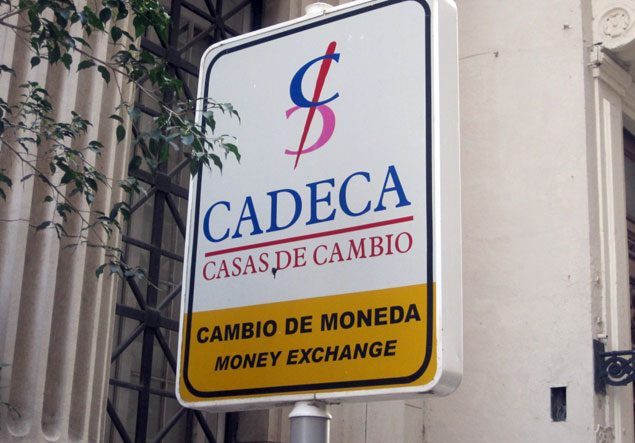
Government currency exchange houses, CADECA, are the most reliable and safest ways to change money. You can find CADECA offices in the airport, hotels, resorts, and shopping centers. CADECA offices will have TV screens displaying the daily exchange rates.
Due to the COVID-19 pandemic, CADECA have limited capacity and reduced hours.
Tip: Before leaving the airport, I recommend exchanging a small amount of Cuban pesos to last you for at least two days. I wouldn’t recommend exchanging all your money at one time. You can exchange more money once you arrive at your hotel, resort, or casa particular.
Can I use credit cards in Cuba?
If you’re banking with an American bank, your credit card and debit card will not work due to the U.S. embargo and sanctions on Cuba. Non-American visitors can use their credit cards at restaurants, shops, hotels, and resorts but watch out; you’ll notice the fees add up after a while.
ATMs in Cuba?
As mentioned above, U.S. debit cards aren’t accepted in Cuba. Trust me, I know; I tried! There’s no use trying; you won’t have any luck.
Visitors from other countries can withdraw Cuban pesos from ATMs but be prepared for two things: potentially waiting in a long line and hefty service fees.
You’re better off bringing enough cash with you and don’t even bother using ATMs and credit cards.
Is Cuba expensive?
I will be the first person to admit that Cuba was more expensive than I anticipated. I recommend budgeting for at least $50-$100 per day per person; if you can get away with spending less, then more power to you! I prefer ballin’ on a budget and tried to spend no more than $50 per day. However, I admit there were a few days when I exceeded my daily budget.
That one time, I ran out of money in Cuba
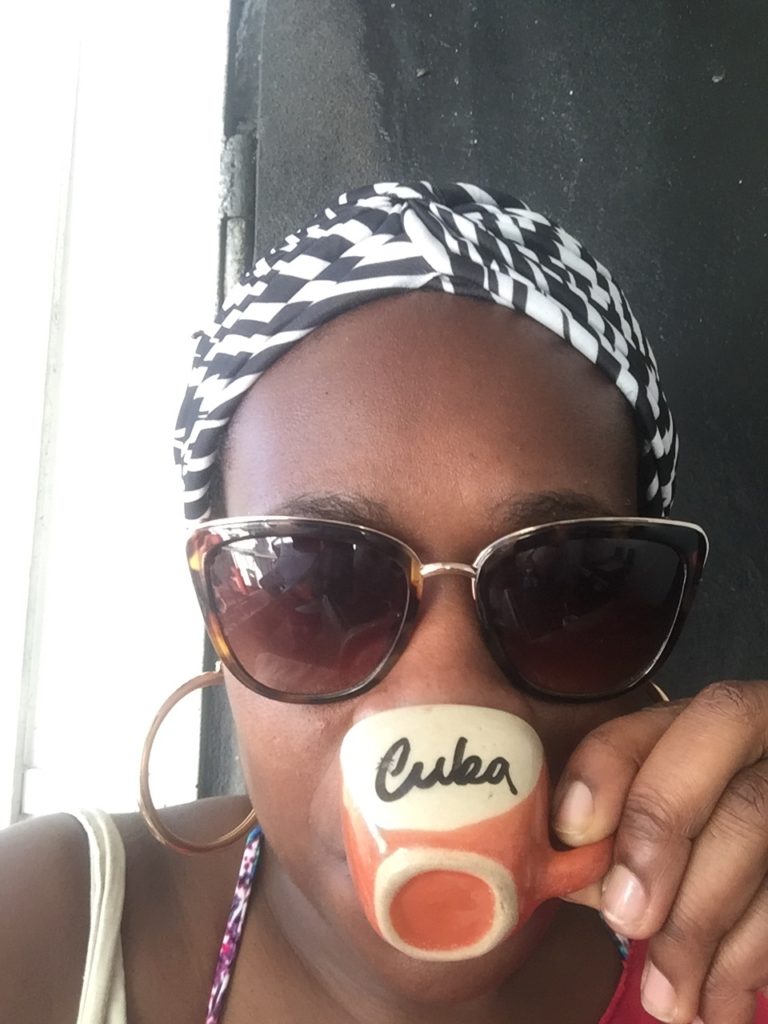
Running out of money in Cuba is not something I wish upon my worst enemy. The third time I went to Cuba, my sister and I did not plan accordingly, and both ended up running out of cash.
On top of running out of cash, there wasn’t wifi for me to send my mother a Whatsapp message asking to borrow money. And let’s not forget that even if she could send money to my bank, I wouldn’t be able to retrieve it. Yep, you guessed right; I bank in the U.S.
Luckily, I called my mother via WhatsApp from our driver’s phone. After speaking to my sister to confirm I wasn’t calling for ransom money, she sent the money to the Western Union—the ONLY option to send money to us.
But wait, there was a catch; only Cuban residents can retrieve money from Western Union offices. Non-Cubans can’t have money wired to a Western Union. My mother sent money to our driver, and after paying the fees, we got our money and were all set for the rest of the trip.
After that day, I promised myself I would never underestimate bringing enough cash and some with me during my next visit to Cuba.
Cuban Currency Guide Recap
I hope this guide offers you valuable insight into the ins and outs of understanding the Cuban currency and what not to do! Here’s a recap of things you need to know about the currency in Cuba:
- The official Cuban currency is the Cuban Pesos (CUP)
- The faces of famous Cuban leaders appear on CUP banknotes
- The best currency to take with you is Euros or British Pounds
- You can exchange money at government currency exchange houses called CADECA, resorts, hotels, airports, and your Airbnb or casa particular host
- U.S. visitors can not retrieve money from local ATM machines
- U.S. credit cards and debit cards will not work in Cuba
- Recommended spending: $50-100/per day, per person
- Plan to bring an additional $100 per day in case you run out of money
Conclusion – Lady Chin’s Two Cents
When I think back to when I ran out of money, I was terrified. I am thankful my sister, and I was able to get the help we needed. However, I learned from my mistake, and during my next visit to Cuba, I will do a few things differently because there will obviously be the next time.
I aimed to spend $50 per day and ended up spending closer to $ 100 per day, which is why I blew my budget. Figure out how much you need to spend per day and double it. You’d rather be safe than sorry!
Related Posts
If you liked this post, please share!
